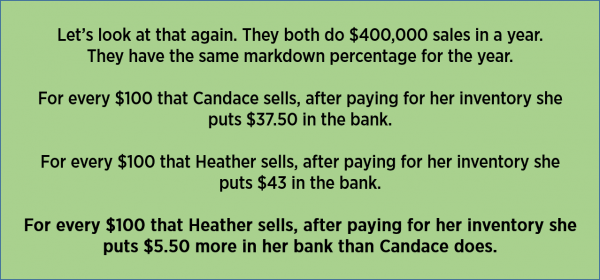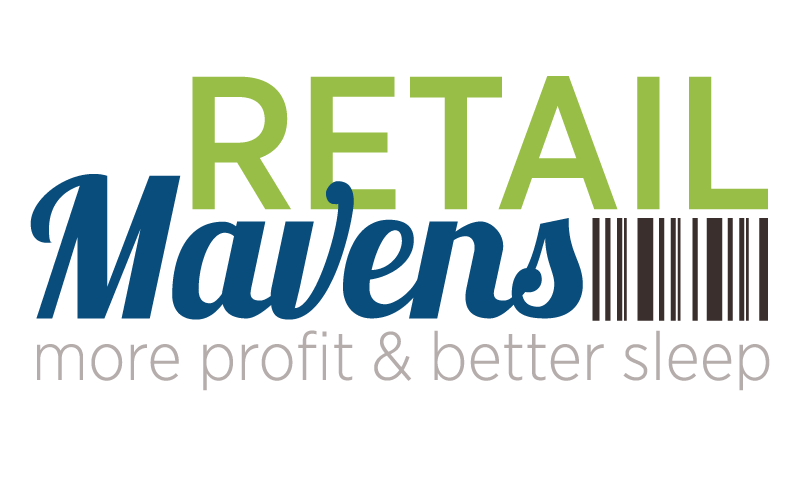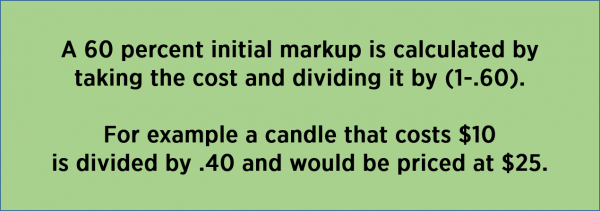Do you know the One Number To Maximize Your Revenue? Everyday every retailer wakes up and goes into their store with the intent of maximizing their revenue with their every action. They intend to do the best they can. But what if their best attempts aren’t focused on the right actions? What if the ladder that they are climbing to get to more revenue is leaning against the wrong wall? They will find that their best isn’t good enough. From personal experience I know that doing the best you can is a stupid plan – you have to have a strategy.
Let’s get going on that strategy to maximize your revenue. There is a science to retail that tells us what strategy generates the most revenue and profit. We could increase sales easily by saying that everything in the store was 50 percent off. But to maximize revenue means to increase profits too.
Independent retailers open their stores because they are passionate about something. They soon find out that passion alone doesn’t pay the bills. What does? Paying attention to numbers does. One of the most important is the gross margin. Also known as gross profit, it is defined as sales minus the cost of goods sold. It measures how much out of every dollar of sales a store actually keeps to pay for everything other than inventory.
The best strategy to increase your gross margin is to increase your initial markup when you price items. That is the One Number To Maximize Your Revenue.
Let us dig into this. The numbers will amaze you!
This is the math that makes you money.
Consider two stores that are doing the same sales volume of $400,000 and taking the same percentage of annual markdowns. (Taking the total markdown dollars and dividing it by the total sales determine the annual markdown percentage.)
Candace has her initial 50% markup, which means that she takes a ball with a $10 cost and marks it up to $20. Not everything is sold at full price, so the amount of gross profit that remains after taking into account markdowns, is 37.5 percent. Think of it this way. For every $100 that she brings in, $37.50 goes towards paying for everything else and $62.50 goes to pay for her inventory.
Heather, on the other hand, set her initial markup at 55 percent. She prices that $10 ball at $22 retail. After markdowns, her maintained markup is 44 percent. For every $100 that she brings in, $43 goes towards paying for everything else and $57 goes to pay for her inventory.

You know that these actually represent percentages, right? So Heather’s gross margin is 5.5 percent more than Candace. Take her sales and multiply it by the gross margin increase to determine how much more money that represents. $400,000 x 5.5% = $22,000
That means at the end of the year, Heather has an extra $22,000.
Heather banked that additional $22,000 because she followed the strategy of increasing her initial markup so that the average markup of her entire store is 55 percent. The key here is that it is the AVERAGE initial markup. Some items have their retail price determined by manufacturers. Other items are marked up 60 percent. Heather has set a goal that every month she reviews the cost and retail of the inventory she has brought in so that the total of all reaches a 55 percent initial mark up.
How to determine IMU (initial Markup) by percentage.
Another key to this is using the science of consumer psychology when pricing. This helps to increase your initial markup effortlessly. You can find the details of the psychology of pricing at www.retailmavens.com/pricing.
Armed with this strategy of increasing your initial mark up, you will go into your store knowing exactly what to do to maximize your revenue.
Next week we will deal with the paranoia that EVERYONE has about increasing prices!
This was originally published in RetailMinded Magazine.


